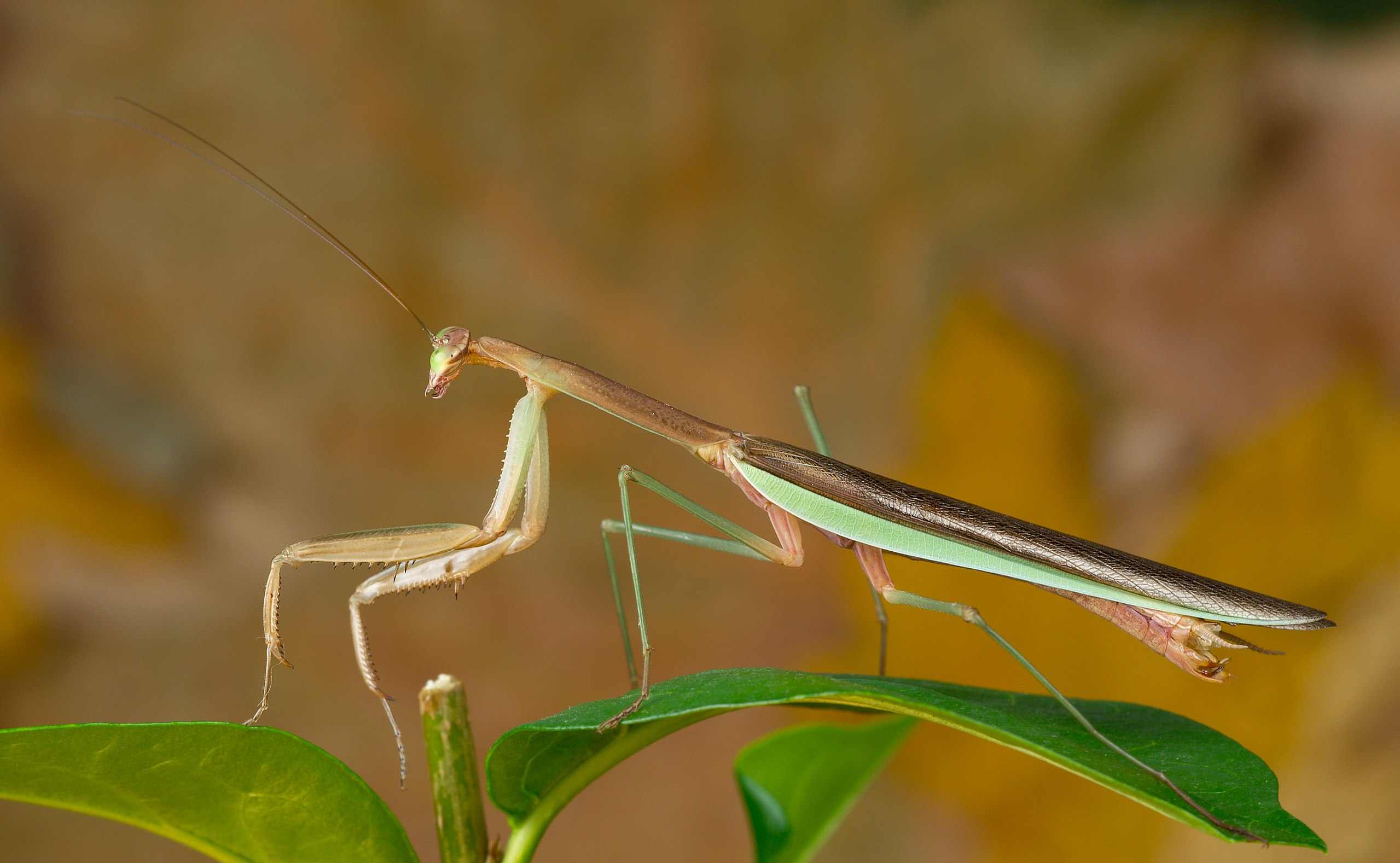
The Chinese mantis (Tenodera sinensis) is a species of mantis native to Asia and the nearby islands. In 1896 this species was accidentally introduced by a nurseryperson at Mt. Airy near Philadelphia, United States. Tenodera sinensis often is erroneously referred to as Tenodera aridifolia sinensis because it was at first described as a subspecies of Tenodera aridifolia, but Tenodera sinensis is now established as a full species. Tenodera sinensis feeds primarily on other insects, though adult females sometimes catch small vertebrates. For example, they have been documented as feeding on hornets, spiders, grasshoppers, katydids, small reptiles, amphibians, and even hummingbirds. Like most mantids, they are known to be cannibalistic. One study found that cannibalism occurs in up to 50% of matings. These mantids have been observed eating the larvae of monarch butterflies, while discarding the entrails.
This mantis is native to China, Japan, the Korean Peninsula, Micronesia and Thailand.
The Chinese mantis is an aggressive carnivore that will tackle and eat large insects. It feeds primarily on other insects such as Fruit Flies, Crickets, Beetles, Moths and Bees. However, it is not uncommon for larger mantids to consume small reptiles, birds and even small mammals.
The Chinese mantis is mostly light brown with dull green trim around its wings.